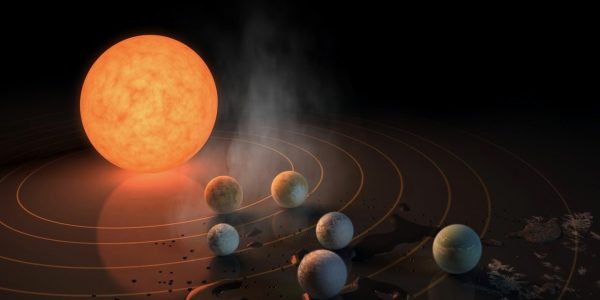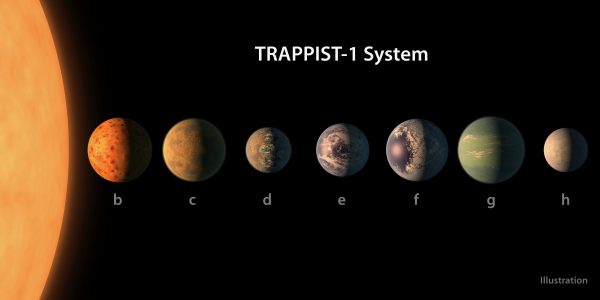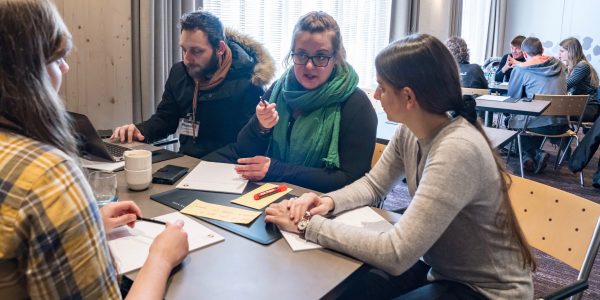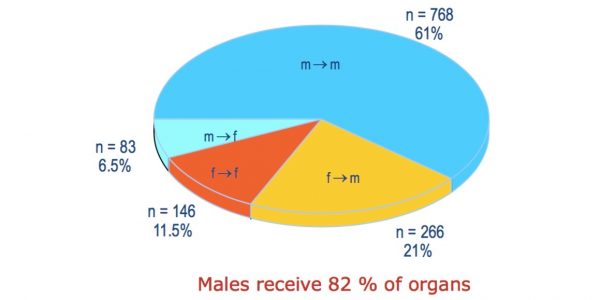News
De Naval nozzle and exoplanetary atmospheres
Continue ReadingMichel Mayor, video game character
The Icelandic firm CCP teamed up with Michel Mayor, renowned exoplanet astronomer and honorary professor at the University of Geneva, to launch the new version of EVE Online, a video game aiming to bring together science and entertainment. The objective: by manipulating real scientific data, tens of thousands of players think of conquering the galaxy, […]
Continue ReadingCould the planets of Trappist-1 house life ?
PlanetS researchers observed Trappist-1 and its planets with the Hubble Space Telescope to find out if life was possible on one of them. The habitable zone is the zone where the temperature at the surface of the planet which is there corresponds to that of the liquid water, indispensable to the appearance of life. The […]
Continue ReadingGrowing planets in the computer
For her work about planet formation Julia Venturini received the prize for the best PhD in physics at the University of Bern. The PlanetS member calculated what happens when you add a new ingredient to the standard model of growing gaseous planets. «For a long time, nothing was working,» remembers Julia Venturini. But finally the […]
Continue ReadingSeven terrestrial exoplanets around a nearby star
An international team of astronomers has discovered a compact analogue of our inner solar system about 40 light-years away. Brice-Olivier Demory of the Center of Space and Habitability at the University of Bern, analysed the data collected with NASA’s Spitzer Space Telescope and calculated that the newly detected exoplanets all have masses less or similar […]
Continue ReadingFrom sand castles to cool freaks
In the three communication workshops at the PlanetS general assembly researchers discussed in groups about possible media releases and presented very creative summaries. Most of the proposed stories will be realized and published in the next weeks or months either as press releases, PlanetS news or articles in our external newsletter “The Observer”. «Tiny star», […]
Continue ReadingReady for testing electromagnetic compatibility
At the University of Bern, the CHEOPS team integrated all electrical and electronic parts into a model of the space telescope to test whether the different units and wires operate correctly and don’t interfere with each other. The electromagnetic compatibility test will take place in the second half of February in a special chamber at […]
Continue ReadingESPRESSO’s schedule
ESPRESSO, the super spectrograph that should be able to measure masses of exoplanets as small as the Earth, is soon ready to be bundled for its final destination: the VLT in Chile. This successor to HARPS, which as its famous predecessor was built at the Geneva Observatory, will undergo its first tests early March in […]
Continue ReadingHeartbreaking disregard of female perspective
In the last edition of the InsiderS, I reported on gender bias in evaluating grant proposals, as heard during a gender conference (http://nccr-planets.ch/gender-bias-erc-grant-evaluation/). Read here about some surprising insights concerning the gender dimension in academic research. By Nadine Afram This is from an interesting presentation about ‘gender equality and the gender dimension in academic research’. […]
Continue Reading10 times denser than gold
An international team of astronomers led by Dan Bayliss of the Observatory of the University of Geneva and member of PlanetS discovered a brown dwarf, an object that is neither a star nor a planet, with a density never seen before. Ten times denser than gold! The measured density of the brown dwarf EPIC201702477b is […]
Continue Reading









